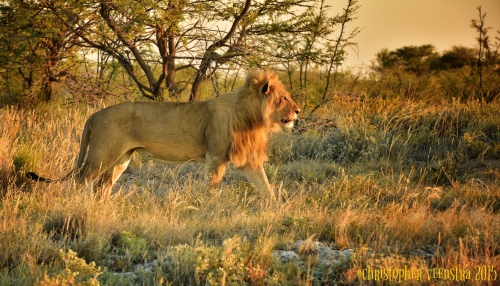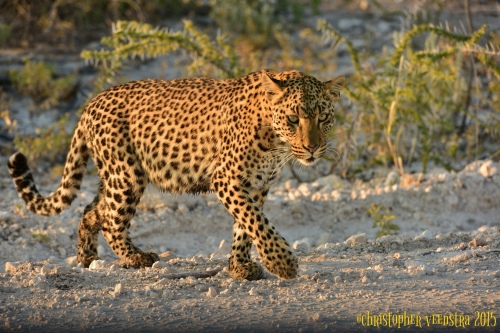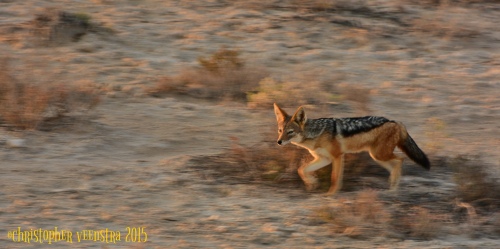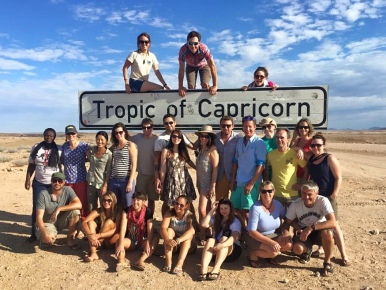Already on the beautiful island of Zanzibar we were planning the last leg of our African trip. This meant some frantic online searching for safari-equipped 4X4s and of course our plane tickets to get back to Namibia. We managed to secure both, although waiting until the last minute to book our bush and camping-equipped 4X4 was not a good idea in retrospect- it was the end of April which is the beginning of the busy season, and these vehicles are in high demand. We finally found one though with a very reputable company (this is also a very important consideration when renting in Namibia), Savanna Car Hire in Windhoek. We got ourselves a Toyota Hilux double cab equipped with a rooftop tent, fridge, and all the camping and emergency road gear you can think of for a 15-day rental which set us back around $100 per day with all of our insurance included- not bad when you consider that you are completely self-sufficient for that period of time. The only other expenses you can expect are the camping fees which average around $30 per site and, of course, fuel. There are however plenty of places in Namibia where you can find a secluded place to pull over and set up camp without paying any fees at all, but if it’s the fancy washrooms with showers, restaurants and many times even swimming pools you want, you will need to pony up on the campsite.
Having been to Namibia a few months prior on our overland tour, we knew there were some places we wanted to return to and spend some more time in, namely some areas in the Namib Desert, Spitzkoppe, and Etosha National Park. As well there were also places that we wanted to explore for the first time such as some areas off the beaten track in the Damaraland and Kaokoveld regions. As with any road trip there would also be some more impromptu stops and in some cases these would prove to be among the highlights of the trip. So, a portion of our road trip was planned and at other times we changed our course and decided to wing it, but our 15 days went without a hitch and we loved every minute of it.
After leaving Namibia’s capital of Windhoek we headed south into the Namib Desert, spending our first few days around the incredible sand dunes and desertscapes of Sossusvlei. We started our mornings before the sun came up and usually didn’t return to camp until well after sunset. Not only are the times around sunrise and sunset the most photogenic, they are also the moments of the day that offer some reprieve from the oppressive temps that is all to common in this part of the country. Many afternoons the mercury climbed to well over 40 degrees Celsius. After we had our fill of the desert we headed towards the Skeleton Coast until just north of the Cape Cross Seal Reserve which is a real treat for all your senses! Here the mornings can be downright chilly and the winds blustery but its rugged scenery is well worth checking out. We then headed inland again spending a couple of nights in one of our favourite places… Spitzkoppe. We were blown away by its beauty the first time around and knew that we couldn’t leave Africa without becoming a little better acquainted with the area.
We then pushed further into Damaraland through the Brandberg area and onto the incredible territory of Twyfelfontein. This region was a spontaneous stop for us and became one of the trip’s highlights. It was here where we discovered many amazing petroglyphs that dated nearly 5000 years old. It was also in this area where we hung out with a herd of over 30 endangered desert elephants and spotted a couple of cheetahs to boot! From Twyfelfontein the roads became progressively worse which signaled our arrival into the Kaokoveld (Kunene) region. This area is arid at best but the further north we pushed, beautiful Baobabs became more prevalent. At some points we couldn’t have been more than 30 kilometers from the Angolan border but we based ourselves out of Opuwo, the hub of the Kaokoveld and the capital of Namibia’s northern tribal lands. The town itself is a hubbub of activity. OvaHimba push shopping carts through the supermarket aisles, Herero women trade their wares in the streets, and groups of Zemba girls hang out on the corners. It's truly a colourful display of life. We did head out to one Himba village not too far from Opuwo which was a nice insight into their culture and a fun afternoon. This experience was much more positive than the one we endured during our overland tour. This time it was just us, our interpreter, and a village full of Himba women and children who were just as happy to spend time with us as we were with them.
After leaving Opuwo we made a beeline for Etosha National Park, entering from its westernmost gate. We spent our first night at Okaukuejo and our remaining nights at Halali, our favourite of Etosha’s camps. We had such great experiences with Etosha on our Nomad overland tour, but nothing could have prepared us for all the wildlife we spotted during our days of self-driving in the park. We really got to know some of the animals during this time; their habits and schedules, which made tracking them a whole lot of fun. Being in your own vehicle you can also spend as much (or as little) time as you want with each animal encounter. During our time in Etosha we saw more animals that make sense to list, and slept each night under the stars with the calls of the wild all around us. These were also very early mornings and late returns to camp, but there can be no question that the best time for wildlife viewing is during the early morning and late evening hours. We were rewarded royally one morning when a lone leopard crossed our path. The sun just came up, and it was just the leopard and us- one of our favourite experiences for sure! After Etosha we spent a couple of nights in the Waterberg region and that took us to the end of our 15-day road trip through Namibia. We put on a staggering 4,700 kilometers in those 15 days but man… was it worth it!
We caught the Windhoek to Cape Town bus a couple of days later and there in Cape Town is where we enjoyed our last six days on the African continent. After four months we had come full-circle to the city we had started our journey, and one of our favourite cities in the world. We rented a car for a couple of days to explore some of the other sights scattered around the Western Cape and fell even deeper in love with the area. There can be no doubt that our trip to Africa was epic and one we will always remember and one we will probably always want to replicate. Seven countries and four months of experiences that we will cherish for the rest of our lives. But this will not be the last we see of Africa!


































